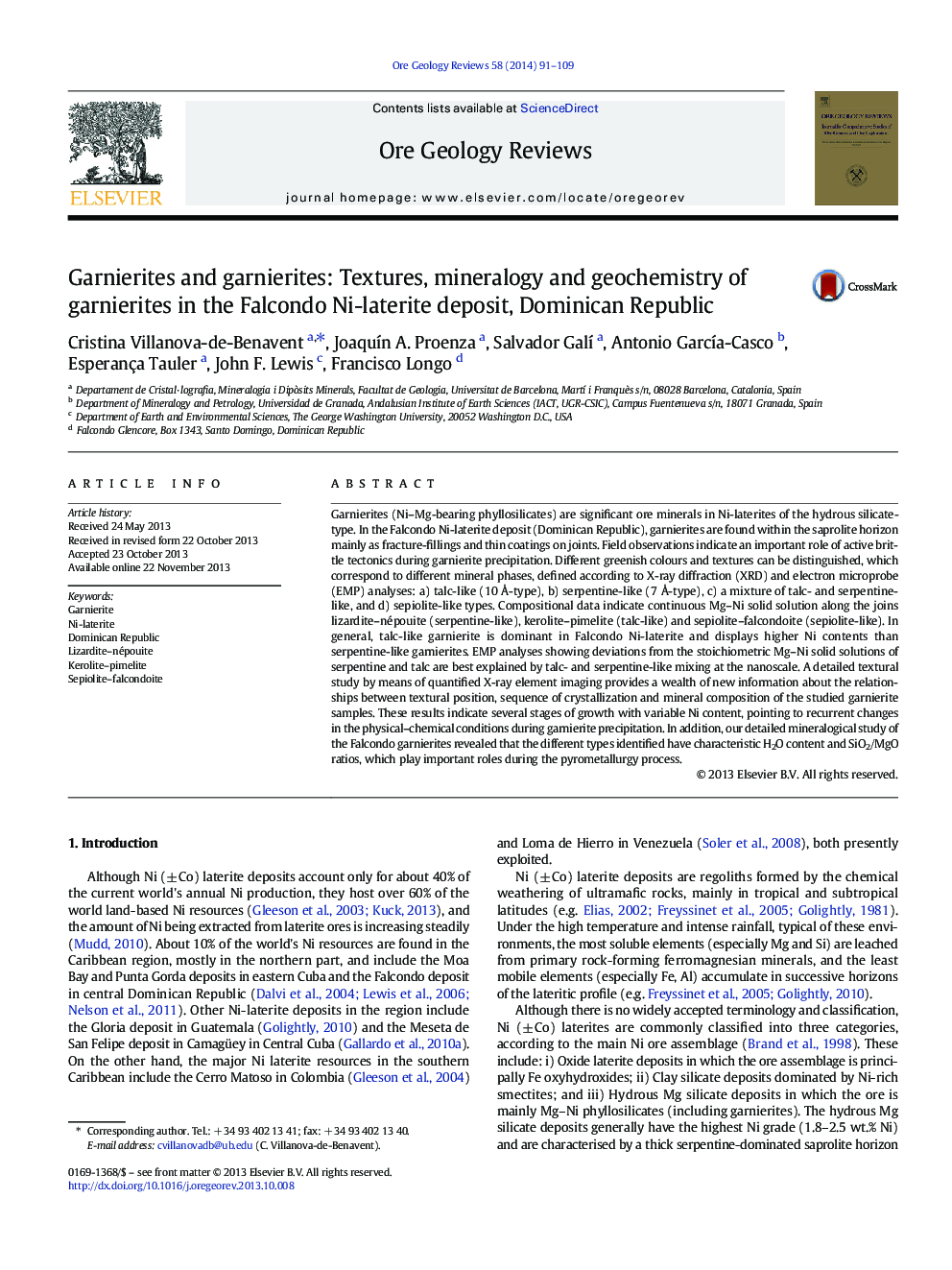| Article ID | Journal | Published Year | Pages | File Type |
|---|---|---|---|---|
| 6435917 | Ore Geology Reviews | 2014 | 19 Pages |
â¢Garnierites from Falcondo precipitated in a tectonically active regime.â¢Five types were identified: serpentine-, talc-, sepiolite-like and mixtures.â¢Garnierite precipitation occurred in successive stages progressively.â¢The main garnierite in Falcondo is talc-like, and shows one of the highest Ni contents.â¢The variation of garnierite mineralogy has implications on ore processing.
Garnierites (Ni-Mg-bearing phyllosilicates) are significant ore minerals in Ni-laterites of the hydrous silicate-type. In the Falcondo Ni-laterite deposit (Dominican Republic), garnierites are found within the saprolite horizon mainly as fracture-fillings and thin coatings on joints. Field observations indicate an important role of active brittle tectonics during garnierite precipitation. Different greenish colours and textures can be distinguished, which correspond to different mineral phases, defined according to X-ray diffraction (XRD) and electron microprobe (EMP) analyses: a) talc-like (10Â Ã -type), b) serpentine-like (7Â Ã -type), c) a mixture of talc- and serpentine-like, and d) sepiolite-like types. Compositional data indicate continuous Mg-Ni solid solution along the joins lizardite-népouite (serpentine-like), kerolite-pimelite (talc-like) and sepiolite-falcondoite (sepiolite-like). In general, talc-like garnierite is dominant in Falcondo Ni-laterite and displays higher Ni contents than serpentine-like garnierites. EMP analyses showing deviations from the stoichiometric Mg-Ni solid solutions of serpentine and talc are best explained by talc- and serpentine-like mixing at the nanoscale. A detailed textural study by means of quantified X-ray element imaging provides a wealth of new information about the relationships between textural position, sequence of crystallization and mineral composition of the studied garnierite samples. These results indicate several stages of growth with variable Ni content, pointing to recurrent changes in the physical-chemical conditions during garnierite precipitation. In addition, our detailed mineralogical study of the Falcondo garnierites revealed that the different types identified have characteristic H2O content and SiO2/MgO ratios, which play important roles during the pyrometallurgy process.
Graphical abstractDownload full-size image
